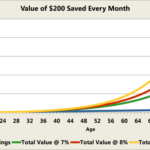What is the Business Life Cycle?
The business life cycle is the progression of a business and its phases over time, and is most commonly divided into five stages: launch, growth, shake-out, maturity, and decline. The cycle is shown on a graph with the horizontal axis as time, and the vertical axis as dollars or various financial metrics. In this article, we will use three financial metrics to describe the status of each business life cycle phase, including sales, profit, and cash flow.

Phase One: Launch
Each company begins its operations starting operations as a business and usually by launching new products or services. During the launch phase, sales are low, but slowly (and hopefully steadily) increasing. Businesses focus on marketing to their target consumer segments by advertising their comparative advantages and value propositions. However, as revenue is low and initial startup costs are high, businesses are prone to incur losses in this phase. In fact, throughout the entire business life cycle, the profit cycle lags behind the sales cycle and creates a time delay between sales growth and profit growth. This lag is important as it relates to the funding life cycle, which is explained in the latter part of this article. Finally, the cash flow during the launch phase is also negative but dips even lower than the profit. This is due to the capitalization of initial startup costs that may not be reflected in the business’ profit but that are certainly reflected in its cash flow.
Phase Two: Growth
In the growth phase, companies experience rapid sales growth. As sales increase rapidly, businesses start seeing profit once they pass the break-even point. However, as the profit cycle still lags behind the sales cycle, the profit level is not as high as sales. Finally, the cash flow during the growth phase becomes positive, representing an excess cash inflow.
Phase Three: Shake-out
During the shake-out phase, sales continue to increase, but at a slower rate, usually due to either approaching market saturation or the entry of new competitors in the market. Sales peak during the shake-out phase. Although sales continue to increase, profit starts to decrease in the shake-out phase. This growth in sales and decline in profit represents a significant increase in costs. Lastly, cash flow increases and exceeds profit.
Phase Four: Maturity
When the market matures, sales begin to slowly decrease. Profit margins get thinner, while cash flow stays relatively stagnant. As firms approach maturity, major capital spending is largely behind the business, and therefore cash generation is higher than the profit on the income statement.
However, it’s important to note that many businesses extend their business life cycle during this phase by reinventing themselves and investing in new technologies and emerging markets. This allows for companies to reposition themselves in their dynamic industries, and hence refresh their growth in the marketplace.
Phase Five: Decline
In the final stage of the business life cycle, sales, profit, and cash flow all decline. During this phase, companies accept their failure to extend their business life cycle by adapting to the changing business environment. Firms lose their competitive advantage and finally exit the market.
https://corporatefinanceinstitute.com/resources/knowledge/finance/business-life-cycle/
Các bình luận
Chuyên mục: Kinh tế - xã hội









Mạng xã hội